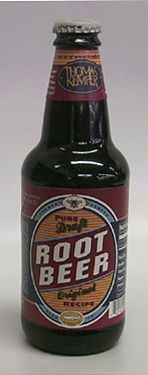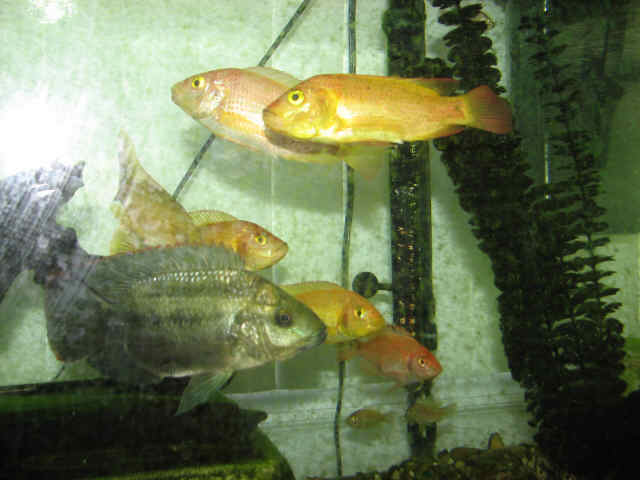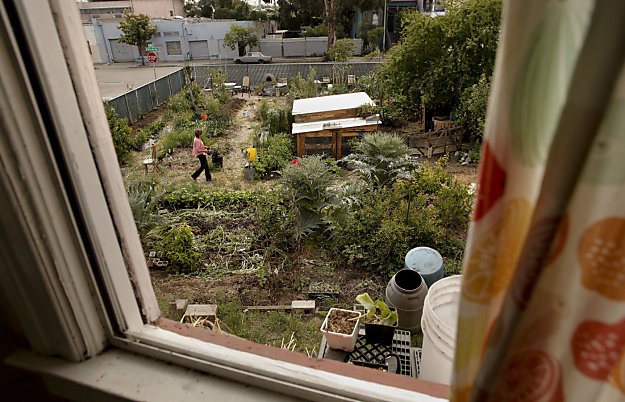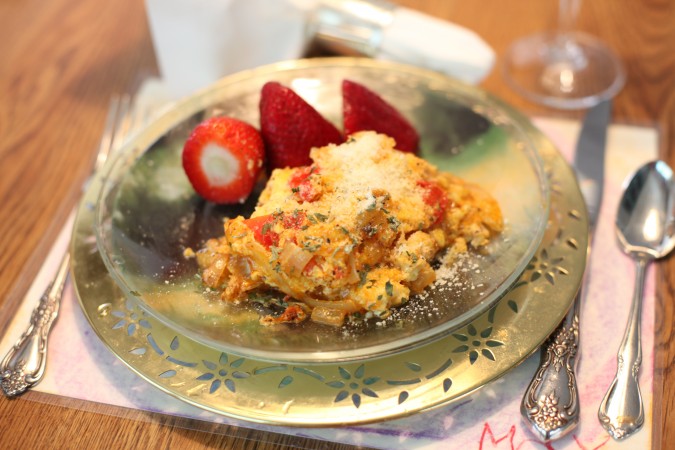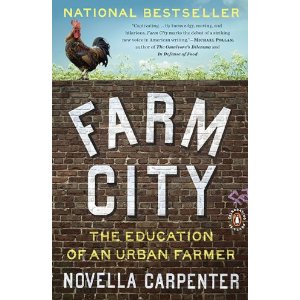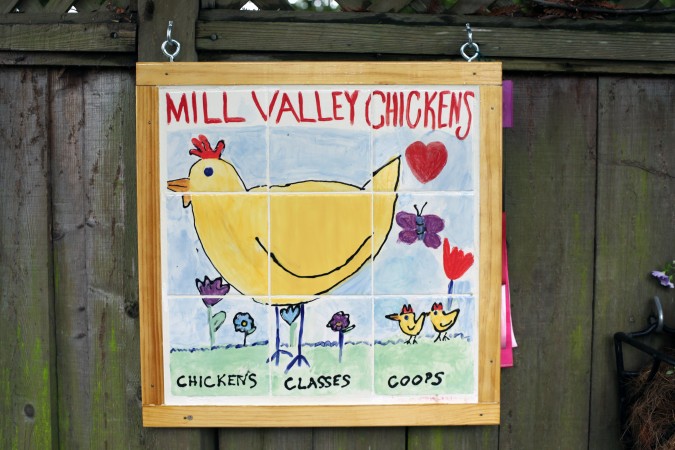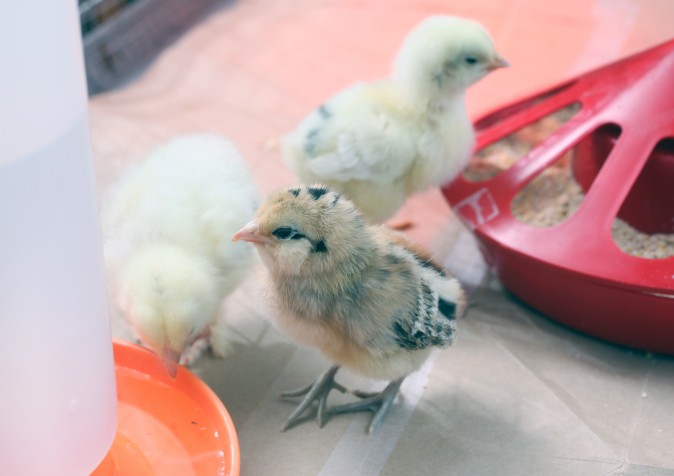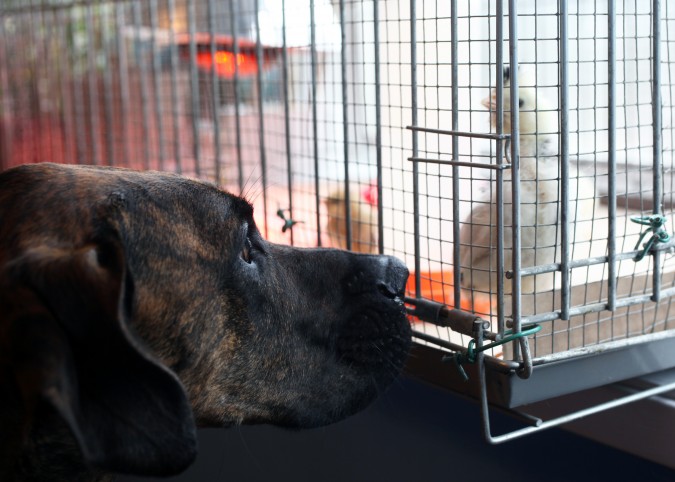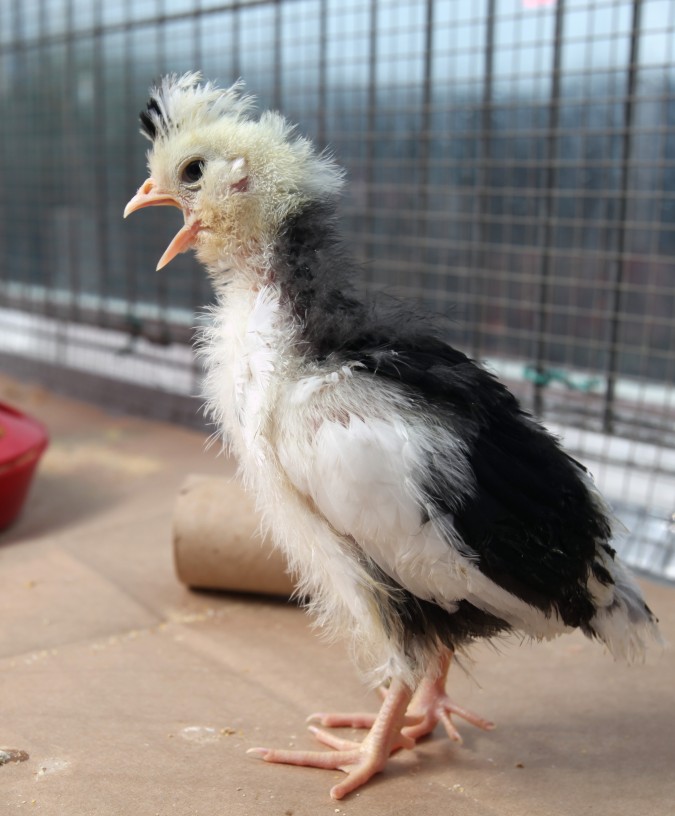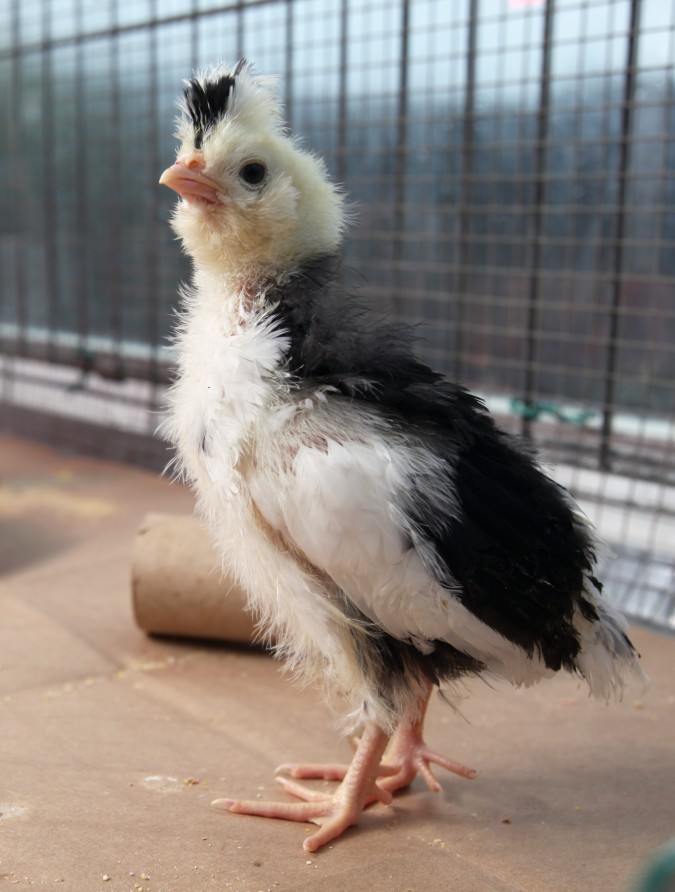Archive for the ‘Food’ Category
Noodling = capturing catfish in the wild by hand or feet
The Wall Street Journal has gone downhill since it was acquired by News Corporation.
Even so, I still read it.
I feel guilty about it, but I loved the paper for so long it’s hard to stop reading it.
One of the things I love about the paper is it prints some crazy stories. This is not a News Corp. addition — the Wall Street Journal has published crazy stories for decades.
One of my favorite crazy Wall Street Journal articles was published about 20 years ago. The article spoke about how rat is served in Southern China in restaurants that specialize in serving just rat based dishes. The writing was so colorful and visceral I remember it well even today. Apparently rat causes nosebleeds for some diners. According to the story, eating rat can make you feel warm and perspire so much that you are inclined to take off your shirt in the restaurant, as some diners did in front of the Journal reporter.
The image of a group of bare chested men eating rat with blood running from their noses is hard to forget.
When I was in Wuhan, China in 2005 for the TeX Users Group International Typesetting Conference I asked the locals if there were any rat serving restaurants in the city. I was told no, that I would have to go further south for that. The article said the restaurant grade rats are raised using a free range technique on dedicated pasture surrounded by electric fencing. The article made it sound like the rats are fed well and are healthy and clean. I would try them. I want to try them. Hmmm, maybe I could buy some lab rats and try to cook them at home? What would my 4 roommates would say about that?
On May 16, 2011 the Wall Street Journal published a story that nearly is as captivating as the rat story — Long Arm of the Law Penalizes Texans Who Nab Catfish by Hand.
There is a way to fish for catfish called noodling. Here’s a description from the article:
Techniques vary. When the fisherman puts his hand into the hole where the fish is, the fish usually bites. Then he can grab the catfish by a lower-jaw bone, or, if he sticks his arm in deep enough into the fish’s body, he can poke his fingers through its gills.
But most important is controlling the tail, Mr. Webb says, which is usually done by the noodler wrapping his or her legs around the fish. “If you don’t get that tail immobilized, I don’t care how big or strong you are, you’re not going to whip that fish,” he says.
For extra reach, some practitioners stick their legs instead of their arms into dark underwater holes. Apparently, you can lose a leg noodling, judging from the shocking photograph accompanying the article, shown here, which shows three men. One has two legs, one has one leg and one has zero legs. They just caught a 60 pound catfish some 5 feet long, and they’re smiling widely.
I knew I would write about this story as soon as I read it. What I didn’t know at the time of publication was that I was soon going to be raising catfish in my backyard in San Francisco, California, USA.
I placed my aquaponics fish tank in my new Harbor Freight greenhouse last week, and I have catfish swimming in the fish tank. Don’t worry, they’re small enough I won’t lose my arms or legs anytime soon.
I have pan fried four catfish in recent weeks, and I like catfish more than Tilapia. I find catfish has more flavor than Tilapia. I am having trouble keeping the catfish alive, which is why I’ve been eating so much catfish recently. But I have read they are almost as easy to raise as Tilapia. I fear I am doing something wrong. I will figure it out and make a success of my catfish project.
Catfish is harder to prepare because you have to pull off the raw skin with large shop pliers, which is a physical chore and messy. But I’m getting better at it, and after ten more fish I predict I’ll be able to remove the skin in under a minute.
A while back I bought a used 275 gallon IBC tote for USD $120 that I plan to cut the top off of. I will then use this food grade tote as a monster fish tank. I should be able to raise 100 to 200 catfish at a time in this tank, which will give me so much fish I should be able to eat a full fish every two days or so, without depleting the stock. I have read that catfish are so efficient that they convert 2 pounds of feed into 1 pound of fish. The feed can be mostly worms you grow yourself using kitchen scraps as feed.
Galco’s Soda Pop Stop sells 500 different kinds of soda
I drink soda in moderation — one serving every two days. I used to drink a lot of cheap Safeway brand soda that I bought on sale for USD $.88 per two liter bottle. I think part of my dramatic weight loss (190 pounds down to 165 pounds, and I’m 6’2”) over the last year may be attributed to cutting so far back on the soda.
In the last two years I’ve all but ceased consuming soda that contains high fructose corn syrup.
I happily pay extra at my favorite grocery store, Rainbow Grocery, for organic soda made with real cane sugar. I can taste the difference.
I only drink soda from the major soft drink brands about once a month, maybe at a movie theater or other venue where organic cane sugar soda isn’t sold.
Now that I’ve convinced myself that small soft drink brands produce a better product, I am thrilled to have found the following video produced by Galco’s Soda Pop Stop. This is a Los Angeles, California USA retail store that also sells over the Internet.
This is the most charming promotional store video that I’ve ever seen. It’s long yet worth watching all the way through.
You will learn something and be amazed at how diverse the soft drink market is. Some of these boutique bottlers have been at it since the 1800s.
According to the Soda Pop Stop website, the store itself has been around over 100 years. Here’s the text from their ‘About Us’ web page:
“Why Galco’s Soda Pop Stop? Because before there were shops, there were Stops!
The business began as a small Italian grocery store in Los Angeles, California. It has been family owned and operated for over one-hundred years. Although the focus of the store has changed to soda pop and beer from around the world (sorry folks we cannot ship beer!) we still maintain our Italian deli in the back of our retail store. We originally became known for our “Blockbuster” sandwiches which are made fresh daily.
The passion for soda began when John F. Nese was a child. His father’s best friend owned a soda pop bottling plant where John loved to visit in the 1950’s. At that time, he also spent his summers at Happy Camp. It was here that he would dream of how he could hook the natural, bubbling spring water, add syrup and siphon it to his elementary school’s drinking fountains. In 1995 John began increasing his assortment of sodas not only out of love, but also as a protest to some of the larger soda companies that were not offering him the same prices as his larger competitors. He figured why not support other small businesses such as his own?
It took a few years, but the idea finally caught on! People started journeying from far away places to get a look at the store with over 400 sodas. We were honored to appear on PBS’s “Visiting with Huell Howser” and the Food Channel’s “Unwrapped” series and German Televison (to name but three of our various television appearances). We have also appeared in Sunset Magazine, The Los Angeles Times, The LA Weekly, The Tokyo Times and various other newspaper features. He has also been a guest on the BBC and the Canadian Broadcasting System. Over the years, we have received letters, phone calls and e-mails from people relating their stories of where they were and what they were doing when they had their favorite soda for the very first time. John’s love of history and trivia extends to his sodas. People who visit the retail store are impressed with his ability to share an interesting fact about any soda of interest.”
Galco’s Soda Pop Stop store as of today has 345 ratings on Yelp, with an overall rating of 4.5 stars. That alone is an astonishing accomplishment, and the owner should be immensely proud.
I’d like to meet John Nese, the owner of Galco’s Soda Pop Stop. If Nese reads this, I invite him to friend me on Facebook here: Facebook.com/kevinlwarnock.
I invite all of my readers to friend me on Facebook.
Here’s the contact information for the Soda Pop Stop store:
Soda Pop Stop
5702 York Blvd
Los Angeles, California 90042 USA
(323) 255-7115
www.sodapopstop.com
Tilapia in San Francisco?
I am finding it difficult to learn for certain if I may raise Tilapia fish in my aquaponics system in my backyard in San Francisco, California.
The California Department of Fish and Game website is not helpful, because it doesn’t appear to address aquaponics, where the fish are kept in an enclosed aquarium, not in a pond, wetland, river, lake or ocean.
I have found websites that suggest I may raise Tilapia anywhere in California provided I select the correct type of Tilapia. One such website, Tilapia farming at home is clear on this subject, but even so, I want to be sure I comply with the law.
Governments can hand out severe punishments for raising Tilapia where not allowed. I watched a DVD about aquaponics in Australia, and the fine for having a dead or alive Tilapia fish in the wrong part of Australia is over $100,000 Australian dollars!
I built my first aquaponics system – you’ll never guess where it is
I’ve written about my friend Kevin Casey a few times before (January 7, 2011, January 9, 2011 and January 11, 2011). I met him in 2007 when he was one of the student organizers for the University of California Berkeley Business Plan Competition. I was a judge and financial sponsor for that competition, so we had plenty of opportunities to talk. We became friends on Facebook, and when he started posting status updates about his startup New Avenue, Inc., I got back in touch with him.
Kevin staged the ribbon cutting for his first house on January 8th, 2011. Soon after, the city of San Jose, California contacted Kevin and asked that he construct a custom house for a 9 month exhibit of green technologies called the San Jose Green Vision Clean Energy Showcase. This exhibit opened this month, in May, 2011. The location is directly across the street from the sparkling City Hall of San Jose.
Here’s the PDF brochure that San Jose is distributing about its Clean Energy Showcase.
Ever since I contacted Kevin in late 2010, I have been talking his ear off about my ideas for shipping container based green housing. One of the parts to my grand plans is to make it practical for residents to grow food at home. The most exciting and productive way to grow food in limited space with limited water is to raise fish and vegetables in symbiotic harmony. This technique is widely known by the word ‘aquaponics.’
Kevin approached me and asked if I’d like to set up a small demonstration aquaponics system on the front porch of his New Avenue demo green home. I jumped at the chance, as this gives me a great excuse to learn more about this and help a friend at the same time. Aquaponics is really popular in Australia, which is in the midst of an 11 year draught. Aquaponics systems use 1/10th the water required to grow vegetables in dirt. Since the world is ‘running out’ of fresh water, it makes sense to learn more about a system that makes such efficient use of water.
I put together a system with off the shelf parts I selected and modified personally. The result doesn’t look bad, but doesn’t look like a commercial polished product either. I am happy with the result for my first system. I used a wire shelf rack from Costco as the frame. I was concerned that infants could drown in a system that didn’t fully cover the water tank, so by setting the height of the first shelf to just over the height of the water tank, I eliminated that risk. You can see this safety feature in the picture above.
The water aerator and the timer are located in an exterior grade water resistant steel junction box fastened to the rear shelf. From there, the system is connected to a GFCI outdoor outlet on the rear of the house. While you can’t see it in the picture because I hadn’t installed it yet, the fish are fed automatically each day via a timed automatic fish feeder.
The vegetable bed is flooded with a foot of water from the fish tank 24 times a day. The flood/drain cycle takes about 18 minutes, and starts on the top of each hour. The pump consumes just 18 watts during a 15 minute per hour fill cycle. The extra 3 minutes is the time it takes for the growing bed to drain back into the fish tank.
The vegetable roots cleanse the water. Since the vegetables get all the water they can absorb, they grow faster than in dirt, up to 600% faster. The fish also grow faster than normal because they get so much clean and well aerated water. It’s a true win/win scenario. The main inputs are fish food and water to replace what is lost to transpiration and evaporation. On occasion, there are tiny inputs of a teaspoon or so of fluid to adjust the pH to keep everything happy. I understand that this is needed primarily during the first 6 weeks of operation, before the healthy bacteria have established themselves in the clay beads that the plants grow in.
I am no expert, but I’m learning a lot, and I appreciate the opportunity to learn on such a public stage. I’ve already met two people that have seen my system and want one of their own!
To learn more, read Backyard Aquaponics Magazine.
Special thanks to Sylvia Berstein, Founder and CEO of The Aquaponic Source, who helped me set up my first system and sold me some of the key parts. Her store is located in Boulder, Colorado, USA.
Back to the stone age
Here’s an off the beaten path article I love the Wall Street Journal newspaper for writing:
Armed With Stone-Tipped Arrows, Hunters Stalk Their Inner Cave Men
According the the article, there are a subset of hunters that are ditching their guns and carbon fiber bows, in favor of bows and stone tipped arrows they make personally.
Here’s a passage from the piece:
“Interest in the stone-age lifestyle has been growing. In recent years, archaeology buffs started arrowhead-making groups in places like Portland, Ore., and Pasadena, Calif. Other die-hards have adopted meat-heavy “paleo” diets, eating like traditional hunter-gatherers.
While there has long been a cult of hunters who use old-style rifles and bows, “bowhunting has picked up pretty tremendously across the country,” says Mike Moore, chief executive of Primitive Archer magazine. The publication’s circulation is up 25% over the past five years, to roughly 30,000, he says.”
I don’t think Bus Conversions Magazine, which covers my hobby of converting a bus to a motorhome, has 30,000 subscribers. I am impressed that so many people are into ‘primitive archery.’ I see it as related to urban homesteading — getting back to nature and how things used to be done.
Novella Carpenter’s getting the zoning laws changed in Oakland, California
My here Novella Carpenter is back in the news today. If you recall, I wrote about her troubles with the Oakland, California authorities on April 1, 2011. They were asking her to buy a $2,500 permit to sell vegetables she grew on her lot in a gritty part of Oakland.
She raised the money and got the permit, as I predicted she would.
What I didn’t predict is that she would continue further to try to get the laws changed in her city so that a permit would not be required. I am proud of Carpenter, and frankly inspired by her.
Oakland urban farming prompts plan to redo rules
I wonder if my life’s work is going to be changing zoning laws worldwide to allow people to live in small, efficient homes where ones food is grown on site, at a cost so low a mortgage won’t be required. That Carpenter is turning her modest fame into being able to be the catylist for getting the laws changed in Oakland makes me think more than ever that I will be able to get laws changed as well. I have years of work ahead of me to even reach the stage Carpenter is at today, but today’s zoning laws are out of touch with the current reality of the planet, where we are running out of resources at an alarming rate, and the current western lifestyle is in grave danger over the coming centuries. A century will pass quickly, and it’s not fair to squander the earth’s resources in a blink of time like we have been doing for the last century.
We should be saving petroleum so that it lasts for thousands of years, since I presume there are some products that really do need genuine petroleum. To waste it on things that don’t ‘need’ it, like heating our homes, should soon become criminal, say in 10 years or 20 years time. Most every home on the planet can be 100% solar heated. Yes, perhaps the house would have to be much smaller to free up the money to pay for the solar heating infrastructure, but so what? In the US, we lived in houses half the current size just a few decades ago, and nobody thought anything of it at the time I suspect. Why not go back to that size house but ditch the entire heating bill forever? Is that not a great trade off?
Teaching cooking in school by having students prepare lunch daily for the entire student population
Around the breakfast table this morning in Tigard, Oregon, at the home of my 99 year old grandmother Elsie Battaglia, I had a good conversation with Claudia.
Claudia is a school teacher, and only recently put her profession on hold to take care of my grandmother full time.
Claudia and I had an animated conversation about teaching children to cook. I wondered aloud if perhaps the best way to teach children to cook would be to have the students cook lunch daily for the student body. Instead of employing kitchen staff, schools could employ cooking teachers that would teach and supervise students who would do the actual cooking and serving.
The teaching opportunities would be varied and numerous:
- Nutrition
- Meal planning
- Accounting
- Budgeting
- Cleaning
- Customer service
- Math
- Growing
- Purchasing
- Cooking
School kitchens already have certified cooking and food preparation appliances, and by turning the kitchen into a classroom for use throughout the school day, the classroom area of the school is automatically increased at zero or small cost.
Claudia thought my idea is worthwhile. She has dozens of ideas she wants to pursue to increase the quality of education. She hopes to open her own small school, where she can implement many of her ideas. I encouraged her to start a blog to write about her ideas to make friends with likeminded readers. She said she’s been wanted to set up a blog for a while now, and asked me to help her set up her blog during my current visit. Of course I agreed, and that’s on our agenda.
Certainly there is a risk if students are charged with cooking for their classmates. Someone might poison the food, for example. But, to my knowledge, prisoners cook for fellow inmates, and I haven’t heard of poisonings happening in that context.
I would think that daily cooking for classmates would help students feel connected to their classmates to such a degree that poisonings would be quite rare. Something is clearly wrong in US schools — so wrong that students are regularly shooting their classmates and instructors with guns. I wonder if cooking for classmates might reduce school shootings by helping students feel more connected to and empathetic towards their fellow students.
The advantages to having every student know how to cook for themselves and for a crowd I believe would strongly outweigh any possible dangers from accidental or intentional kitchen related incidents.
The way the system works in the US now is millions of students can’t cook a healthy, delicious and balanced meal when they graduate. As a result, they rely on corporations to cook for them. The Omnivores Dilemma by Michael Pollan details the many horrors that result when corporations cook food to feed a populace.
When corporations cook for people, health suffers and people get sick and die. The number of people that get sick from eating corporate food is likely orders of magnitude higher than the numbers of students that perhaps might get sick by eating student prepared food.
Society should be able to accept a potential small incremental risk to the immediate safety of school lunches in exchange for a dramatic improvement in food safety long term by the population turning away from corporate food in favor of home cooked healthy and delectable meals.
The gold standard even today for desirable food is a ‘home cooked meal.’ Why aren’t we teaching the entire population how to prepare a great home cooked meal? It is unfortunate that cooking isn’t a required class each year of school. With my plan, described here, to turn school kitchens into classrooms, and to turn students into trained cooks and kitchen managers, adding 12 years of cooking classes to every K-12 educational system in the country doesn’t have to cost extra, and the dividends society will reap are potentially shockingly dramatic.
I predict that a rigorous analysis of my plan will show that the lifecycle cost benefit to my plan will total trillions of dollars per generation, as the health care costs to treat the illnesses associated with poor diet will likely be shown to dwarf any direct costs associated with turning school kitchens into cooking and management classrooms.
Many others are advocating for healthy school lunches. Here are some links:
- High School Students Bring Healthy School Lunch to DC – and Cook with White House Chef Sam Kass
- Two schools grow, cook food in lunch partnership
- Healthy School Lunches
- Students Will Cook Their Lunch and Eat It, Too
I predict a firestorm of protest from various powerful unions if they were to seriously consider adopting what I write above. The existing school lunch cooks would probably not have teaching credentials, so the teachers’ unions would probably not want them to become teachers. I also suspect the existing lunch staff would not want to teach hundreds or thousands of students how to do their jobs.
I don’t know what type of person would be best suited to the position of cooking teacher, but I am nearly certain there would be many applicants for a job like I’ve outlined above. I think a special type of person is needed — someone who is passionate about food and nutrition and teaching, yet can handle the daily grind of operating what amounts to a busy commercial kitchen with student workers.
I am passionate about teaching people to cook. I created and published my first cooking show in January. I sadly haven’t published follow on episodes yet, but I remain committed to publishing 11 more shows this year.
Oakland, California tells Novella Carpenter she needs a permit to sell produce she grows at home
One of my heroes is Novella Carpenter, author of Farm City: The Education of an Urban Farmer.
Carpenter inspired me to start my own urban homestead in San Francisco, California, where I live.
Today Novella is getting significant press coverage because she got caught selling chard from her backyard garden. Here are links to a selection of the stories, which have generated hundreds of user comments hours after publication:
- Oakland gardener questions need for permit to sell produce
- Popular produce stand in West Oakland shuttered until farmer sorts out permit issue with city of Oakland
- City of Oakland fines urban homesteading author Novella Carpenter
- Yep, Novella Carpenter still needs a permit if she wants to sell produce from her garden
- Iconic urban farmer Novella Carpenter
- Oakland cracks down on Novella
I’ve met Carpenter at the Commonwealth Club of California, after I saw her speak there January 25, 2011.
Oakland, California is demanding Carpenter acquire a permit to sell products from her homestead. Apparently such permits cost a few thousand dollars.
Since Carpenter is famous and has zillions of supporters, I suspect she’ll come through this experience just fine. A permit costs money, but she can raise the money from her fans and then be compliant with the rules. The result will be more visitors to her vegetable stand because she’s getting a ton of great press right now.
I learned from the press coverage she’s now receiving that she paid just $30,000 for the vacant lot behind her apartment that she had been squatting on until recently. She received this favorable price because the owner wanted her to own the land. Doing this probably made the past owner feel good, and gave her some bragging rights that she enabled Carpenter to really get serious about her urban homestead.
I admire it when people get famous by doing something interesting and passionately writing about it.
In case you missed my post from January 25, 2011, here’s a clip of Carpenter speaking at the Commonwealth Club of California:
Carpenter teaches homesteading classes, including on how to raise dairy goats. I plan to take that one as soon as it’s offered again.
I cooked rabbit for the first time
I have ordered rabbit occasionally from restaurant menus. I’ve enjoyed eating rabbit, but I never have cooked it.
I shop for meat at Guerra Meats at 490 Taraval Street in San Francisco, California, where I live. This charming store was opened by Mark and Battista Guerra in 1954, and I often hear the butchers greet their customers by name.
On March 28, 2011 when I was shopping there for boneless chicken breast, I saw that a full rabbit only cost $1 more per pound. I purchased the rabbit and the butcher cut it up on a floor mounted serious looking band saw with no blade guard protecting the 12 inches of exposed blade. His fingers were quite close to that blade as he made about 10 cuts in short order. I cringed watching him work as I am so much more careful when working around power tools, and my neighbor told me a story only weeks ago where a butcher friend of his was cutting frozen meat on a band saw and cut a handful of fingers off and didn’t know it because his hands were so numb from the cold. His coworkers alerted him when they saw blood everywhere. Ouch!
Yesterday, March 29, 2011, I made two meals from the rabbit. I cut off about 4 ounces of meat and made one of my Chinese recipes, with snow peas, mushrooms, zuchinni, onions and red bell pepper. The result was delicious. Rabbit is close in taste to chicken. It’s a bit more substantial I found.
Later, I fried the remaining rabbit as if I were making fried chicken. This was even better than the Chinese dish. I found the rabbit to be more flavorful than chicken, so much so that it really was finger licking good. It was scrumptious.
Now I’m wondering if I could ever bring myself to raise rabbits for meat. The book Urban Homesteading that inspired me to try urban homesteading makes it sound easy. Rabbits are so cute and cuddly I don’t know if I could ever kill one to eat.
Have any of my readers killed a rabbit, duck, chicken or quail for food to eat personally? If so, please write a comment describing how it felt and how difficult it is.
We have four baby chicks nesting in an incubator in my bay window
I have four housemates — Gina, Marie, Megan and Jesse. They all responded to my Craigslist ad where I proposed starting an urban homestead at my San Francisco house. One of the plans I outlined was to raise chickens for eggs. Today I went with Gina, Marie and Jesse to Mill Valley, California to Mill Valley Chickens where we selected four adorable tiny chicks to come live with us.
Marie provided a portable dog cage to make into an incubator. I supplied the light fixture and the hardware cloth to narrow the gaps in the dog cage to make them too small for the chicks to be able to escape through.
In just a few hours the chicks were eating voraciously in my dining room. We’ve decided to keep them in the dining room for now so we can enjoy their cuteness as much as possible since they grow so fast. Three of our chicks were born March 16, 2011, just 3 days ago. The other was born about 3 weeks ago and is about 3 times the size of the newborns.
I took some pictures of our new babies and have posted the best ones below. Enjoy!

